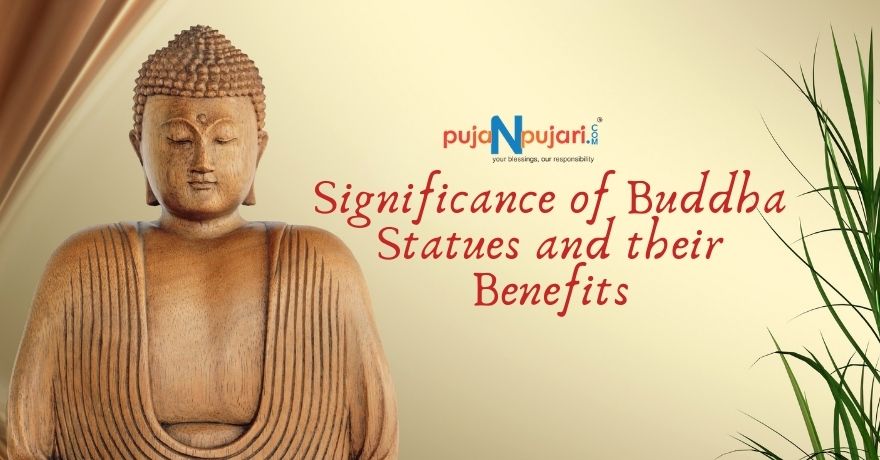Vastu Tips
Buddha Statues Significance and their Vastu Benefits for Home | Life Story of Buddha
The name Buddha evokes a sense of calm and peace. A silent meditating figure under the bodhi vriksha is the picture that comes to mind when one thinks of this outstanding personality. His followers consider Buddha as the enlightened one, as he lay down the path to moksha. His teachings have brought and are bringing solace to millions across the world. Buddha's path to enlightenment is an inspiring journey. His life story describes his efforts to break the chain of pain and that of life and death.
Life Story of Buddha
Buddha was born as Siddartha to the royal couple, Śuddhodana and Maya Devi. When the king asked his court astrologers to predict the young prince's life, everyone had only this to say. The prince will become either a great emperor or a saint who will change the course of the world either way.
After hearing the prediction, to make him a great emperor, the king confined the prince to the palace, away from misery. Siddhartha learned all the religious text and martial arts fit for a king.
Soon, when young Siddhartha attained age, Śuddhodana arranged his marriage with princess Yashodhara. The young royal couple had a son, Rahula.
King Śuddhodana realized it was time for the coronation of the young prince. Siddhartha wanted to know how his kingdom was before becoming king. Despite his parents' protest, he convinced them otherwise and went with his charioteer to look around the empire.
Where he expected a lavish lifestyle similar to his own, he saw poor miserably suffering. The experience left him hurt and miserable. Sensing his mood, his wife Yashodhara asked him what was wrong, but the young prince could not say even a single word.
In the night, when he went to drink water, he saw maids and servants laying round the palace, like corpses unaware of their surroundings. All this further made him question his lifestyle, and his brain started ticking to find a solution out of the misery.
He relinquished his family and title. To find answers to life miseries, he donned the attire of sage amidst the cries of his family and son. He renounced his lavish lifestyle and turned from Prince Siddhartha into sage Gautama.
In his quest to find enlightenment, he touched hundreds of lives and put them on the path of righteousness. Once he attained enlightenment, he became Buddha and touched millions of lives through his teachings, marking the beginning of Buddhism.
Different types of Buddha statues and their Meanings
One of the many ways that Buddha remains amidst people is through the idols. If you go looking, you can find many types of Buddha statues. Each figurine conveys at least one teaching of Gautama Buddha.
- Alms Collecting Buddha: Buddha with alms bowl signifies compassion. It is also a symbol of the opening of the heart chakra.
- Contemplation Buddha: This form of Buddha promotes humility and increases one's spiritual confidence. Contemplation Buddha is also a symbol of tolerance.
- Earth Touching Buddha: The most common form of Buddha found in Thai temples is the Earth Touching Buddha. It represents the enlightenment moment of Buddha.
- Medicine Buddha: Those who seek to improve their health seek refuge in medicine buddha, who hold herbs in one hand. We usually find it in Nepal and Tibet temples, as the people of the region believe Buddha gave the knowledge of medicine to the world.
- Meditation Buddha: The most common form of Buddha found in the world over is the Meditation Buddha. It represents concentration and stability.
- Protection Buddha: Protection Buddha offers protection from fear, anger, delusion, and other negative feelings. It is a reminder of courage.
- Reclining Buddha: Nirvana Buddha, or the Reclining Buddha, represents his last moments on Earth before attaining Nirvana.
- Repelling the Ocean Buddha: This statue has its origin in the story of Buddha repelling the water to stop the flooding caused by a hermit's anger.
- Teaching Buddha: Teaching Buddha depicts teaching, understanding, and fulfilling one's journey. It is also the symbol of Buddha giving his first sermon after attaining enlightenment.
- Walking Buddha: Walking Buddha depicts his travels. It mainly signifies that he is leaving for a sermon or returning from one.
Benefits of the Buddha statue
Buddha statues find a home in gardens, offices, and personal spaces. Depending on the need and requirement, people opt for different buddha statues from the list given above. One of the most common Buddha figurines apart from the ones mentioned above is the bust of Buddha. The intricate carvings like the curly hair tied in a knot, half-closed eyes, and long ears in the bust are captivating and can transport the viewer to another world.
There are multiple benefits of keeping buddha statues at home or office or meditation centers.
- Having the teaching buddha statue is beneficial for those who are studying or for those pursuing spirituality.
- Medicine buddha statue benefits everyone in the family by promoting health among the family members.
- People keep Meditation Buddha to draw inspiration to meditate from the finest meditator. Meditation is one of the fundamental ways to unwind and practice mindfulness.
- Reclining Buddha at home constantly reminds you of the purpose of life, i.e., to free oneself from life's miseries and attain Nirvana.
- Students and kids find peace when Protection Buddha is around them. It gives them the courage to overcome their fears and lead a stress-free life.
Buddha statues are much more than decor objects. Buddha figurines add an aesthetic look and, when placed appropriately, bring prosperity and health. Consult our Vastu and Feng Shui experts to know more about the ideal placement option around your living spaces. Bring Buddha idols home and transform your thoughts and lives to lead a comfortable and content life.

